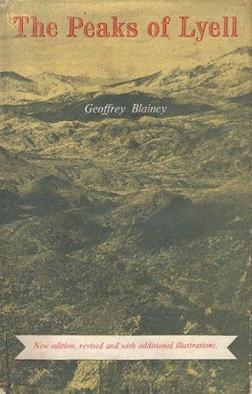
The White Australia policy was a set of racial policies that aimed to forbid people of non-European ethnic origins – especially Asians and Pacific Islanders – from immigrating to Australia in order to create a "white/British" ideal focused on but not exclusively Anglo-Celtic peoples. Pre-Federation, the Australian colonies passed many anti-Chinese immigration laws mainly using Poll Taxes, with Federation in 1901 came discrimination based on the Dictation Test, which effectively gave power to immigration officials to racially discriminate without mentioning race. The policy also affected immigrants from Germany, Italy, and other European countries, especially in wartime. Governments progressively dismantled such policies between 1949 and 1973, when the Whitlam government removed the last racial elements of Australia's immigration laws.

Guns, Germs, and Steel: The Fates of Human Societies is a 1997 transdisciplinary nonfiction book by the American author Jared Diamond. The book attempts to explain why Eurasian and North African civilizations have survived and conquered others, while arguing against the idea that Eurasian hegemony is due to any form of Eurasian intellectual, moral, or inherent genetic superiority. Diamond argues that the gaps in power and technology between human societies originate primarily in environmental differences, which are amplified by various positive feedback loops. When cultural or genetic differences have favored Eurasians, he asserts that these advantages occurred because of the influence of geography on societies and cultures and were not inherent in the Eurasian genomes.

Alan Louis Charles Bullock, Baron Bullock, was a British historian. He is best known for his book Hitler: A Study in Tyranny (1952), the first comprehensive biography of Adolf Hitler, which influenced many other Hitler biographies.
Keith Windschuttle is an Australian historian. He was appointed to the board of the Australian Broadcasting Corporation in 2006. He was editor of Quadrant from 2007 to 2015 when he became chair of the board and editor-in-chief. He was the publisher of Macleay Press, which operated from 1994 to 2010.

The Fatal Shore: The Epic of Australia's Founding is a 1986 book by Robert Hughes. It provides a history of the early years of British colonisation of Australia, and especially the history and social effects of Britain's convict transportation system. It also addresses the historical, political and sociological reasons that led to British settlement. It was first published in 1986.

Australian literature is the written or literary work produced in the area or by the people of the Commonwealth of Australia and its preceding colonies. During its early Western history, Australia was a collection of British colonies; as such, its recognised literary tradition begins with and is linked to the broader tradition of English literature. However, the narrative art of Australian writers has, since 1788, introduced the character of a new continent into literature—exploring such themes as Aboriginality, mateship, egalitarianism, democracy, national identity, migration, Australia's unique location and geography, the complexities of urban living, and "the beauty and the terror" of life in the Australian bush.
Tianxia, 'all under Heaven', is a Chinese term for a historical Chinese cultural concept that denoted either the entire geographical world or the metaphysical realm of mortals, and later became associated with political sovereignty. In ancient China and imperial China, tianxia denoted the lands, space, and area divinely appointed to the Chinese sovereign by universal and well-defined principles of order. The center of this land was directly apportioned to the Chinese court, forming the center of a world view that centered on the Chinese court and went concentrically outward to major and minor officials and then the common subjects, tributary states, and finally ending with fringe barbarians.
Geoffrey Norman Blainey, is an Australian historian, academic, best selling author and commentator.
The history wars is a term used in Australia to describe the public debate about the interpretation of the history of the European colonisation of Australia and the development of contemporary Australian society, particularly with regard to their impact on Aboriginal Australian and Torres Strait Islander peoples. The term "history wars" emerged in the late 1990s during the term of the Howard government, and despite efforts by some of Howard's successors, the debate is ongoing, notably reignited in 2016 and 2020.

The Peaks of Lyell is a book by Geoffrey Blainey, based on his University of Melbourne MA thesis that was originally published in 1954. It contains the history of the Mount Lyell Mining and Railway Company, and through association, Queenstown and further the West Coast Tasmania.
The Tyranny of Distance may refer to:
Stuart Forbes Macintyre was an Australian historian, and Dean of the Faculty of Arts at the University of Melbourne from 1999 to 2008. He was voted one of Australia's most influential historians.
William Wheeler Bunge Jr. was an American geographer active mainly as a quantitative geographer and spatial theorist. He also became a radical geographer and anti-war activist in the US and Canada.
In geography, the centroid of the two-dimensional shape of a region of the Earth's surface is known as its geographic centre or geographical centre or gravitational centre. Informally, determining the centroid is often described as finding the point upon which the shape would balance. This method is also sometimes described as the "gravitational method".

Australian rules football and Gaelic football are codes of football, from Australia and Ireland respectively, which have similar styles and features of play. Notably both are dominated by kicking from the hand and hand passing as well as rules requiring the ball is bounced by a player running in possession, both have a differentiated scoring system, with higher and lower points values for different scoring shots, both have no offside rule, and both allow more physical contact and players on the field than other football codes - 15 in gaelic football, 18 in Australian Rules.

A Voyage to Terra Australis: Undertaken for the Purpose of Completing the Discovery of that Vast Country, and Prosecuted in the Years 1801, 1802, and 1803, in His Majesty's Ship the Investigator was a sea voyage journal written by British mariner and explorer Matthew Flinders. It describes his circumnavigation of the Australian continent in the early years of the 19th century, and his imprisonment by the French on the island of Mauritius from 1804 to 1810.
Claudio Véliz is an economic historian, sociologist and author from Chile, who has held numerous academic posts in various institutions of higher learning including La Trobe University (Australia), Harvard and Boston University.

Geography of media and communication is an interdisciplinary research area bringing together human geography with media studies and communication theory. Research addressing the geography of media and communication seeks to understand how acts of communication and the systems they depend on both shape and are shaped by geographical patterns and processes. This topic addresses the prominence of certain types of communication in differing geographical areas, including how new technology allows for new types of communication for a multitude of global locations.
Sun Books was an Australian publisher of paperback books, founded in Melbourne in 1965 by Geoffrey Dutton, Max Harris and Brian Stonier. Sun's three founders were all former employees of Penguin Australia who, having grown frustrated by the latter's tepid interest in home-grown content, had resigned in order to establish the imprint, envisioned as a publisher of “quality paperbacks for the sophisticated Australian reader”, and a platform for local literary talent. Prior to its acquisition by Macmillan in 1981, Sun had published over 330 titles, of which 187 were first editions.
The historiography of Australia refers to the publications produced by historians of Australia, and the sources, critical methods, topics and interpretations they have used and examined. Many 19th century histories were written by prominent settlers or commissioned by colonial governments intent on influencing British policy in the colony or promoting British investment and immigration. Professional academic history began in the 1890s, dominated by "imperial" interpretations in which Australia was seen as an example of a flourishing British society in a new land.









